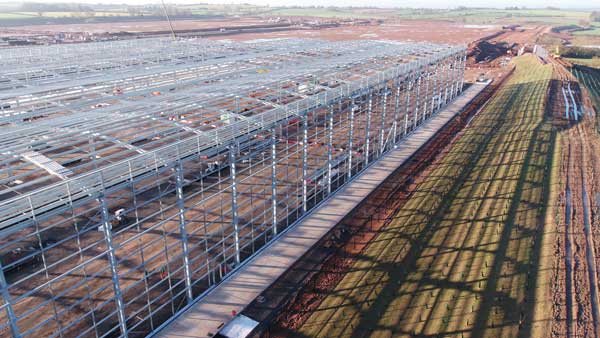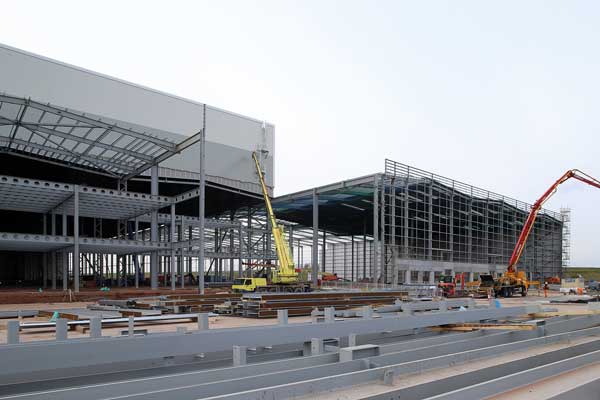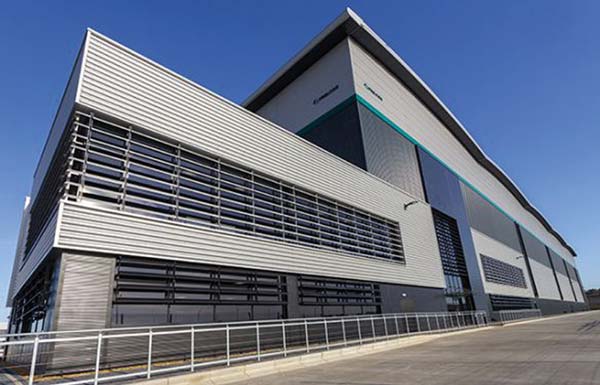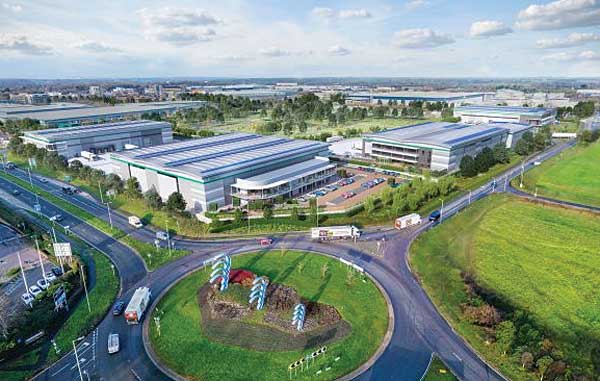Projects and Features
Sheds perform increasingly vital role
Sheds have become acknowledged as providing a crucial link in the UK’s supply chain as the pace of structural change in retail is accelerated by the COVID-19 pandemic. Nick Barrett reports that sheds – which lend themselves exceptionally well to steel construction – are also becoming bigger and more complex.

The Industrial and Logistics property sector – sheds to you and me – has proven to be one of the most resilient throughout the pandemic-induced disruption to normal economic life of the past year. It has in fact managed to grow at a remarkable pace, largely in tandem with a growth in online shopping that meant logistics and retail companies had to scramble to secure the available space, which was already in short supply.
The take up of the available space was dramatic and picked up pace as 2020 went on, but in the early months of the year, as worries over Brexit and the pandemic gripped boardrooms across the economy, there was a slump in orders for the construction of sheds. Planning difficulties have also played their role in a fall in construction of sheds of over 23%, although steel increased market share slightly to 92.4%. Confidence has picked up considerably since then though and shed developers and builders are reportedly busy again.
Geoffrey Taylor of steelwork contractor Caunton Engineering said: “There was little happening for about four months last year, a lot of projects were put on the back burner. But by midsummer the market took off again. Design and Build is proving a popular procurement route, it is the quickest way. The shed market is made for steel, which is fast and cost-effective and projects can get the material they need when they need it.”
During those dramatic swings in sentiment, the humble shed increasingly became recognised as performing a vital role in the UK’s supply chain infrastructure, having proven invaluable in grappling with the COVID-19 pandemic, Brexit and structural changes in the economy, especially the growth in E-commerce. The logistics sector alone is estimated to support almost two million jobs, so this is a key industry being supported by steel. The sector takes up almost half of the structural steel used in construction, so this is also a key industry for steel.
The industrial and logistics sector is a broad one and has always been a big user of constructional steelwork, for facilities including warehousing, distribution hubs, factories serving all sectors of industry, waste-to-energy plants and now increasingly data centres and self-storage facilities.
The British Property Federation estimates that 21 million sq ft of new logistics space will be needed each year to keep pace with population growth alone. The most dramatic growth in demand has come from logistics. It is easy to pinpoint why – online sales doubled over just nine months in 2020, as much growth as was seen in the previous five years. About 40% of the demand came from E-commerce and Post & Parcel companies, according to property company Cushman & Wakefield (C&W), with Amazon alone accounting for 12 million sq ft across 21 individual sheds.
The pandemic has accelerated structural changes due to the growth of online retail that were underway for some years. ‘Last mile logistics’ is also creating new demand, often for smaller units, as retailers have to come nearer to city centres to store goods as close as they can to where people need them. Other new demand is coming from retailers acquiring storage space to increase inventory levels at the start of the pandemic, and National Health Service needs for storing and distributing Personal Protective Equipment.

Brexit may boost demand
There is also a demand for space to stockpile ahead of the unknown impact of Brexit. The jury is still out on what the final impact of Brexit will be, but it looks like there will be an increasing need for sheds to stock inventory, including imports of non-perishable goods in the UK, to overcome delays at ports.
With an end to the worst impacts of the COVID-19 pandemic hopefully in sight, and the economy gradually opening up again, questions understandably arise over whether the recent stellar performance of sheds as an asset class will continue. The answer for the short to medium terms at least seems to be a confident and encouraging yes.
Property researchers suggest that up to 50 million sq ft of space was taken up in 2020, the highest ever recorded. A previous record was 40 million sq ft, achieved in 2008, just before the financial crisis made funding hard to get; it took until 2018 to get back to that level.
Availability of space fell by 14% over 2020 to 61.6 million sq ft and there is a growing shortage of available stock. Rents and capital values have been rising in response, encouraging developers to recently start backing speculative developments. Cushman & Wakefield expect over 7.7 million sq ft to be delivered this year and Savills has identified over eight million sq ft of speculative space being constructed at the start of this year. This level of development will only hold the balance of supply and vacant space at about its current level, so there are solid prospects of growth.
Sheds are getting bigger
Sheds have been getting bigger, as readers of NSC will have noticed over the years. Last year there were 25 warehouses of over 500,000 sq ft taken up, a trend predicted to continue by property researchers at Savills. These big sheds are also becoming more complex as their users introduce the latest technology inside them, such as temperature controls needed by food manufacturers, rainwater harvesting systems, use of energy efficient materials, and LED motion sensor lighting. High BREEAM and EPC ratings are being pursued by many developers.
Providing the larger and more complex national and regional distribution centres that the UK needs is a recognised challenge for the property sector, but one that steel is well placed to help meet, thanks to its flexibility, ease of adaptability to changing uses and many sustainability benefits.
Manufacturing forecast to grow
The E-commerce market was in sharp contrast to manufacturing last year where take-up fell from 34% in 2019 to 12% in 2020 as manufacturers and others put investments on the back burner due to Brexit and COVID-19 uncertainties.
Some forecasters expect occupiers will need more UK space because of Brexit; some expect less. Several developers have announced plans to increase investment in sheds, some citing opportunities created by Brexit. With the shape of the Brexit deal now known, growth is forecast to start rising again.
The announcement of eight Freeports in the Chancellor’s recent Budget also looks likely to boost demand for a variety of shed type buildings, for storage as well as possibly manufacturing and assembly of products with supply chains in various countries. Other new sources of demand for industrial sheds include manufacturing for offshore wind, an industry that the UK is a world leader in.
Property company Knight Frank estimates that the growth of E-commerce could create demand for an additional 92 million sq ft of warehouse space by 2024. Knight Frank says that for every £1 billion of online retail sales 1.36 million sq ft of warehouse space is needed; three times the amount of shed space needed by high street retail because of the need to hold stock previously held in shops and to process the high level of returns of goods bought online.
Their analysis suggests that the spike in online sales in 2020 alone will generate demand for 30 million sq ft of space, rising to a total of 92 million sq ft by 2024 if online sales capture an expected 32% of retail sales.
C&W partner Sally Bruer says she is confident of the prospects for the Industrial and Logistics sector in 2021: “We think 2021 will continue this trend in terms of occupational demand. We are seeing an extraordinary level of investor demand and rental growth across the market.












